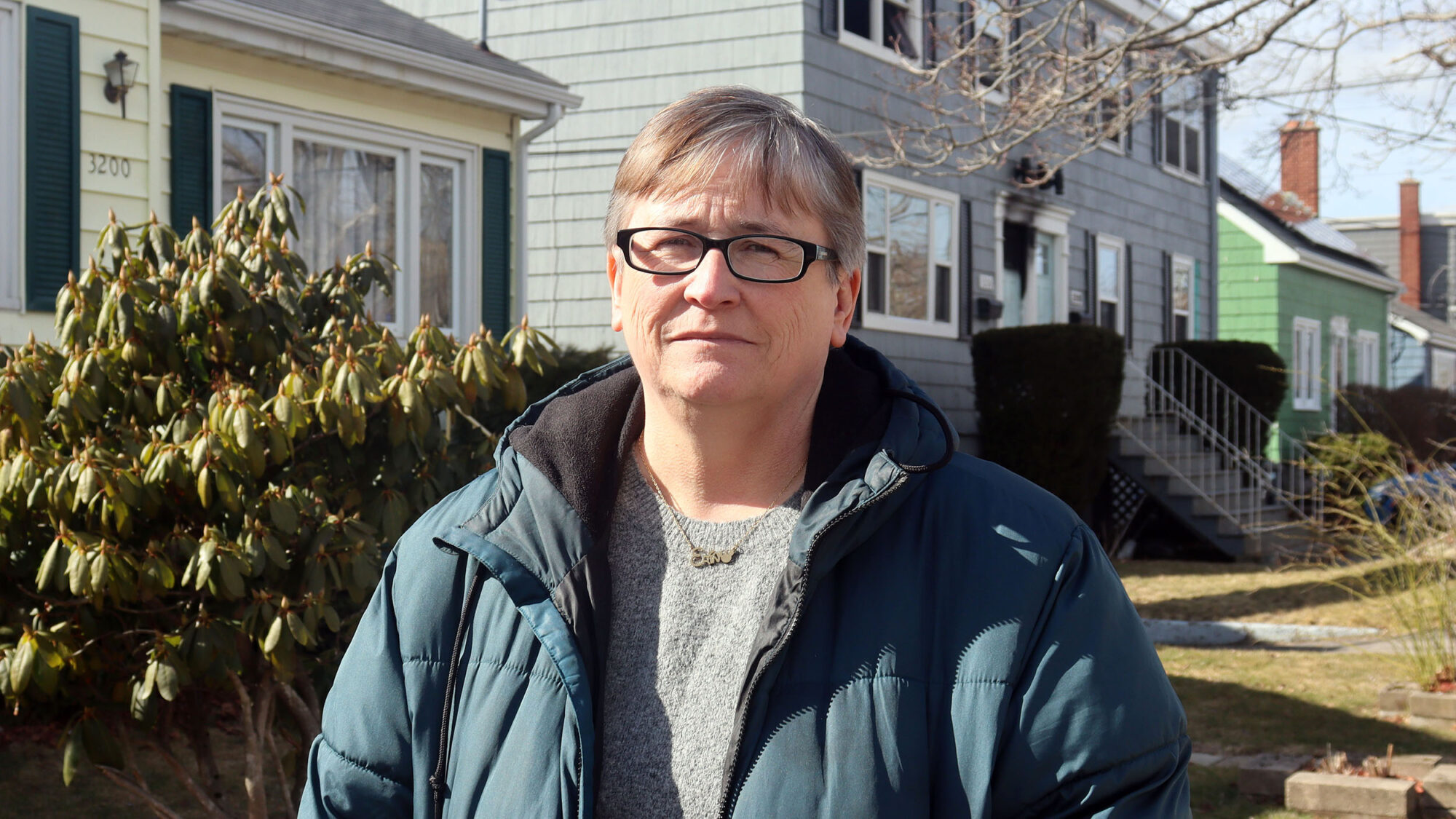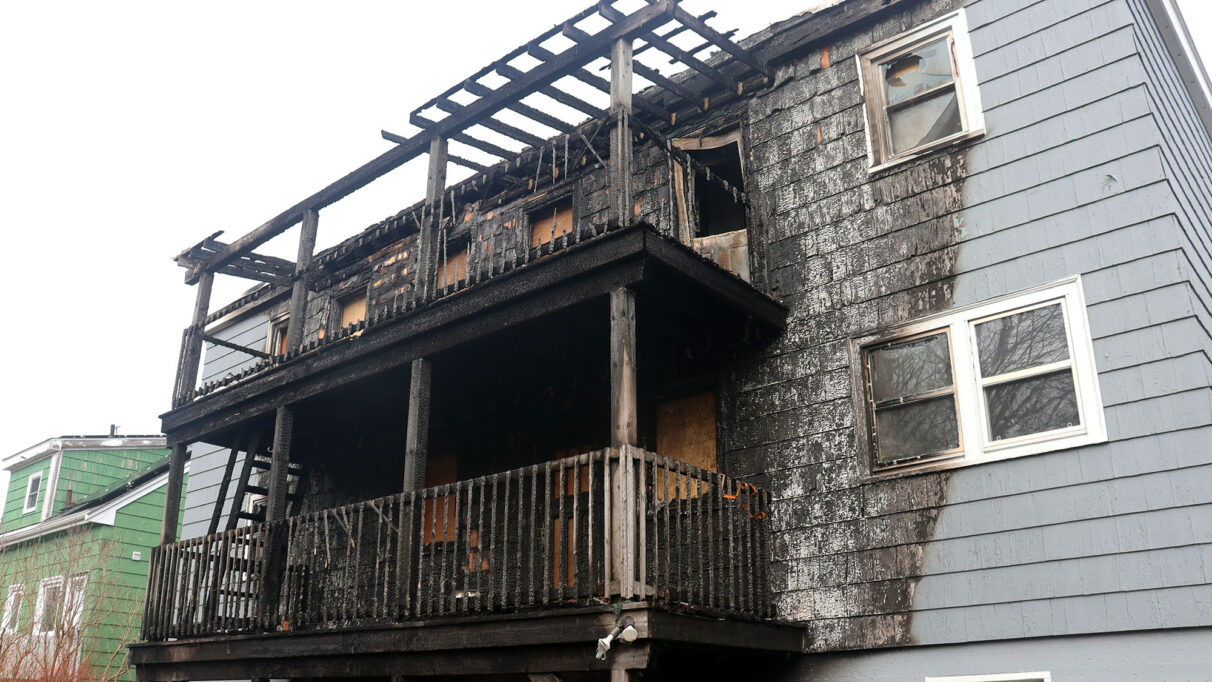Where there’s smoking, there’s fire
Cigarettes and other smoking devices the top cause of major structure fires in Halifax

caption
A neighbour’s house fire forced Erin Reid to evacuate her house one night in March.Erin Reid woke at 3 a.m. one Friday in mid-March to commotion outside her house in the Halifax neighbourhood of Fairmount. Then she heard banging on her window.
It was her landlord, who lives in the suite above hers. The house next to theirs was on fire.
Reid spent the next hour on her lawn as the fire blazed and police, paramedics and two fire trucks arrived.
“We brought some water and coffees to the people that were out,” said Reid. “Some people were just in their bare feet, so we brought socks and blankets too.”
The firefighters used two large fans and a hose to get the fire under control and eventually extinguish it, Reid recalls.
In the aftermath, the street-side facade of the burnt house looked almost innocent, apart from the charred upper half of the front door. The worst of the damage could be seen from the back of the house, where the better part of the exterior wall and multi-level deck is blackened and warped.
Discarded cigarette butts were sprinkled across the front lawn.

caption
The fire was started on one of the balconies at the back of the house.“It started at the back, on one of the balconies,” said Reid.
The details of the incident were posted to Halifax Regional Fire and Emergency’s online database. The ignition source, according to the database, was a smoker’s article such as a cigarette, cigar or pipe.
An analysis of data from Halifax Regional Fire and Emergency shows that smoker’s articles have been the top cause of major structure fires in Halifax Regional Municipality between January 2019 and March 2025. These materials have been the ignition source of 12 per cent of major structure fires within the municipality, affecting 28 buildings over the last five years.
Patricia Duncan, the manager of internal and investigative services at Halifax Regional Fire and Emergency, said they classify “major structure fires” as fires that cause extensive damage to buildings. These fires are not easily extinguishable and require multiple resources to put out, and the building will either be lost or need significant repairs as a result.
While cigarettes and other smoking devices are the No. 1 determined cause of major structure fires in the municipality, they are not the top cause of all investigated fires. That prize goes to stove range-top burners, which account for 7.3 per cent of all fires in the municipality over the last five years.
Only six of the 231 fires that started from stoves in the last five years grew large enough to be classified as a major structure fire. Most of them were contained enough to not consume a significant part of the building in which the fire was started.
This has not been the case with smoking articles.
Halifax deputy fire chief Dave Meldrum has been firefighting for over 33 years and has observed how fires started by cigarettes and other tobacco products can be more dangerous than those with different ignition sources.
Meldrum said that a cigarette left somewhere — dropped on the back of a deck where leaves have fallen, or between seat cushions indoors — may take a long time to be noticed.
“The challenge here is those fires will smoulder for a very, very long time,” said Meldrum. “And the smouldering fires are very hard to detect.”
Smouldering fires are quiet, and they build heat over time before reaching ignition temperature and erupting into flames, which makes the eventual blaze more difficult to extinguish when it takes shape.
Major fires started by smoking materials also more commonly occur at night, according to Meldrum.
“People are up and awake, maybe they drop that cigarette or that ash somewhere, and then off they go to bed. And hours later, in the middle of the night or in the early morning, they’ve got a fire emergency in the home,” said Meldrum.
According to Duncan, these fires are also missed in their early stages more often because people typically don’t smoke in the same spaces they spend most of their time. The smouldering fires then start and grow in a place removed from where they might be noticed.
Amber Berringer and Morgan Surette work for DKI Proper Care, a company that provides emergency restoration services for buildings damaged by a disaster. They had been hired to work on Reid’s neighbour’s house and said they have seen homes ruined by accidental fires.
Eleven days after the Fairmount blaze, Berringer sat on the steps of the house, a lit cigarette between her fingers, and described the most common causes of fire incidents she’s seen.
“Mostly cigarette butts,” said Berringer. “[People] just throwing them out and then catching trees on fire, grass.”
Surette said the first thing that came to mind when thinking of the most common culprits of fire incidents was negligence. Other than kitchen fires caused by grease, the most common example of negligence she’s witnessed has been fires caused by cigarette ashes being thrown into green compost bins — evidently after ignoring the writing on the lid that says ‘no ashes.’
The state of smoking in Canada
The sale of cigarettes in Canada has declined 67 per cent over the 21 years from 2004 to 2025. While the sale of manufactured tobacco is not reported as consistently, data from Statistics Canada shows that in July 2024, 15,916 kilograms of fine cut manufactured tobacco were sold — an 80.5 per cent decrease from sales in the same month 20 years earlier.
Despite the decreasing use of tobacco products in Canada, fires caused by smoking materials continue to be a prevalent concern across the country.
Nationwide data on fire incident origins shows that 16.3 per cent of reported structural fires in Canada were caused by smoking materials or an open flame in 2021, the most recent year data is available.
Of the provinces and territories that reported ignition source data to Statistics Canada that year, Nova Scotia had the third-highest proportion of smoking-related fires in the country. British Columbia had the highest and Ontario was second.
Notably, the same Statistics Canada dataset shows the number of fires caused by smoking materials and open flames in Nova Scotia increased 29.3 per cent from 2005 to 2021, even though smoking-related fires dropped by 47.3 per cent nationally in the same period.
What can be done?
When asked about measures that could be taken to further prevent smoking-related fires in Halifax, Meldrum said it comes down to individual actions.
“Number one, everyone would be encouraged to reduce their use of smoking materials. It’s bad for health and it’s potentially a fire risk,” said Meldrum. “But really the big one is getting rid of that stuff safely. So, honest to goodness, folks have a can on their back deck — that’s not good enough. You want a can of wet sand that you’re going to put your cigarette in.”
His instruction for indoor disposal is similar, advising that people should completely fill ashtrays with water before throwing ashes in the garbage.
“Because another area we do see careless use of smoking materials is in bagged garbage,” said Meldrum. “So, it’ll smoulder inside the garbage bag for a long time. And in an apartment building, we see a lot of garbage room fires.”
He said that when looking through the trash after a garbage room fire, his team will often find lots of evidence of cigarette and tobacco use.
Matt Covey, division chief of fire prevention for Halifax Regional Fire and Emergency declined an interview request but emailed a response explaining what the city is doing to educate the public about smoking-related fires. He cited a page on the city’s website with more tips on safe disposal.
“[Halifax Regional Fire and Emergency] performs many public education campaigns every year based on what we are observing,” Covey wrote. “Our public education focus right now is on working smoke and carbon monoxide alarms.”
While he did not comment on whether a public education campaign had ever been conducted in the city about the role smoking materials have played in starting major fires, Covey did say that a campaign like that would make the most sense during a warmer weather season.
“Smoking material safety campaigns are often best suited for the mid-to-late summer when conditions are dry, as discarded smoking materials can be a contributor to wildfire,” said Covey.
Reid said she’s terrified of inadvertently causing a fire due to carelessness or negligence.
“Even when I light a candle, I set an alarm on my phone in case I fall asleep,” she said. “Just scares the crap out of me.”
About the author

Emily Enns
Emily Enns is a Master of Journalism student at King's. She has a BA degree from the University of Manitoba, majoring in history.
